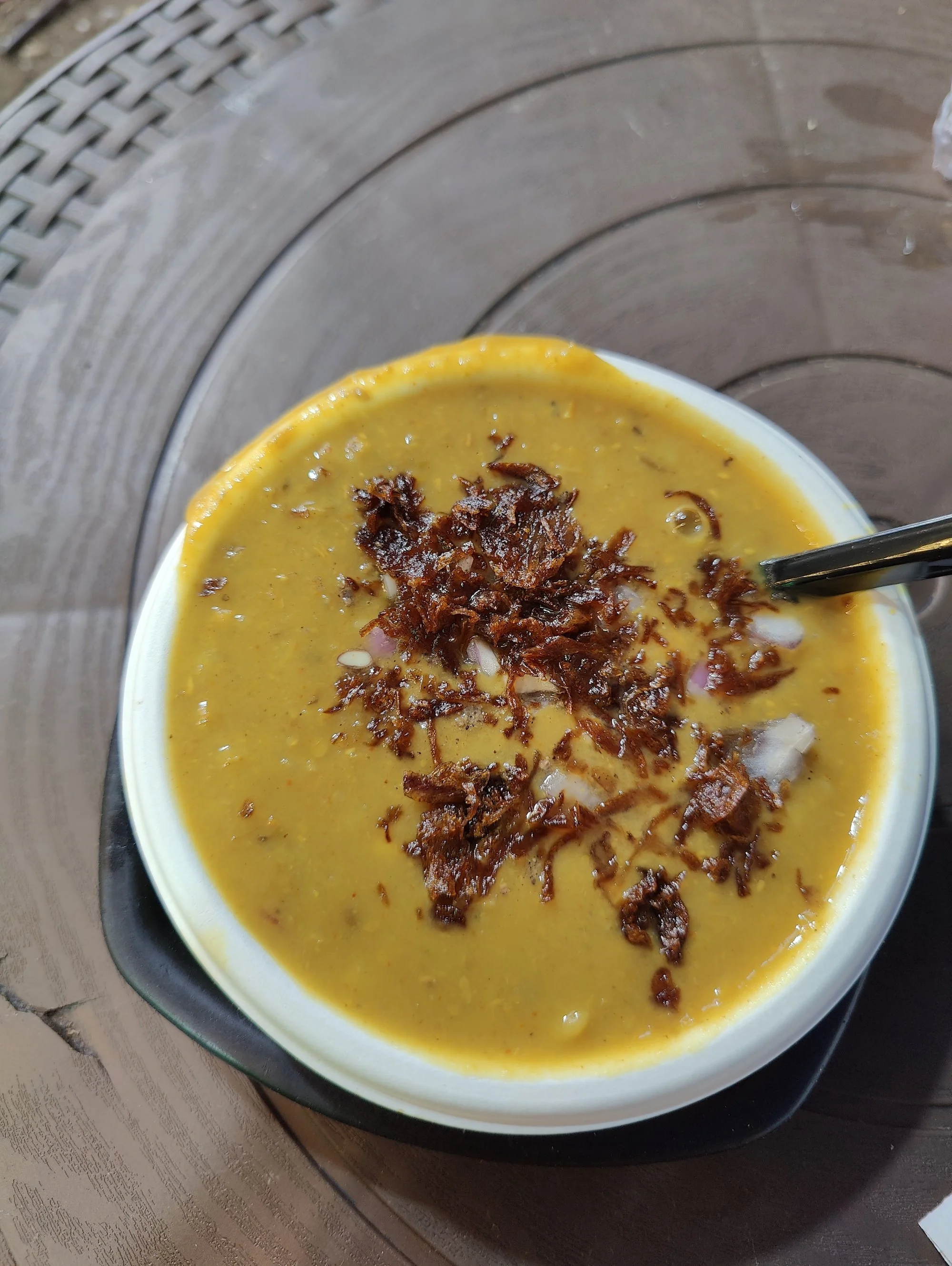From Sehri to Iftaar in the Streets of Lucknow

Chef and author Sadaf Hussain takes us through the streets of Lucknow, pre-dawn for sehri, and after sunset and Maghrib, for Iftaar.
It is my first Ramzan in Lucknow, this Land of Nawabs, celebrated for its elegant and delicate culinary traditions. Curious to explore, I set out to immerse myself in the city’s unique blend of history, culture, and flavours.
At 2 am, the alarm wakes me. Time to head to the famous Akbari Gate, Nakkhas. My cab driver, a local, explains that Lucknow never truly sleeps during Ramzan. People take to the streets early in the morning, gathering for Sehri and to catch up with friends. And when I reach Nakkhas Market, I am greeted by exactly that—an almost festive energy. Flashlights light up the streets, shops bustle with activity, selling everything from food to home decor, Ittar, and other Ramzan essentials. My mission is simple: to discover food that is not only delicious, but light enough to savour at this hour. I find kebabs, shahi tukda, nihari, and of course, chai. After 90 minutes of wandering through this vibrant lane, I head home, but my exploration of this Lucknowi Ramzan is far from over.
Later that evening, for Iftaar, I make my way to Hussainabad, the street outside Chota Imambara, which has transformed into one of Lucknow's newest food lanes. Here, the food is an eclectic meeting of tradition and modernity. Traditional shaami kebabs, khichda, and fried snacks are served alongside more contemporary offerings like Turkish kunafa, Iranian dum chai, and even bubble tea and Delhi’s famous Mohabbat ka Sharbat. This lane, with its mind-boggling jumble of old and new, encapsulates the vibrant and evolving spirit of Lucknow's culinary scene. I took it all in, inhaling the sounds and smells of this city’s Ramzan.
Laccha aur pheni | Nakhas Market, Lucknow A favourite Sehri meal during Ramzan. To eat, crush the pheni, soak it in warm or cold milk, and sweeten with sugar. For an extra indulgent treat, top it with thick gob of Lucknowi malai. This is possibly the lightest meat at a Lucknow’s sehri.
Keema samosa | Aminabad, Lucknow Crisp, flaky, and packed with chunky, spiced kheema, to me keema samosas are the true star of any Iftaar Dastarkhwan. Homemade or from the markets, there's nothing quite like kheema samosas. In Lucknow, hand-minced meat is available very easily during Ramzan; most shops keep it at the ready, since the consumption of kheema is so high.
Irani dum chai | Hussainabad, Lucknow This city runs on chai, and everyone has their favourites. Hussainabad, however, brings something unique—Dum chai and Persian lemon tea—both infused with local flavours, and probably quite different from what you’d find in Iran or Persia despite its nomenclature. Whether it’s a morning walk or a late-night stroll, Lucknow-walas swear by their steaming cup of tea.
Sheermal & ghilafi kulcha | Chowk, Lucknow Among its assortment of breads, Lucknow’s Street’s sweet and saffron-kissed sheermal, and crisp and flaky ghilafi kulcha are most beloved. Pair them with a good nihari or galawati kabab.
Raheem's kulcha-nahari, Akbari Gate, Lucknow While they open early enough the rest of the year, Ramzan transforms Raheem’s into a nightlong feast, serving from 5 PM till Sehri. Food lovers from neighbouring places like Sitapur, Barabanki, and Unnao — and more far off cities like Delhi and Mumbai — make their way to Lucknow just to experience the city’s buzz, and savour their iconic kulcha-nahari!
Khichda, Hussainabad, Lucknow A power-packed dish, khichda is a slow-cooked protein-rich soup, made with a mix of lentils and meat. A close cousin to the haleem (but very different), this Awadhi delicacy is a staple in many Old Lucknow households, and now taking charge of the streets. It is typically prepared with red meat and delicate spices.
Tawa paratha, Nakhas Market, Lucknow From the kitchens of Lucknow’s nawabs to the streets, warqi paratha is a flaky masterpiece from Awadhi cuisine. Crisp and buttery, it pairs wonderfully with all kinds of gravies and kababs.
Gulabi chai, Nakhas Market, Lucknow Flavoured with saffron, kewra, and elaichi, this rose-hued beverage is a special-occasion favourite among Lucknow-walas. Made from the same tea leaves as green tea, but with a dramatically different taste, gulabi chai is creamy and aromatic.
Shahi tukda, Hussainabad, Lucknow This regal dessert is a reflection of Lucknow’s refined palate, created with saffron, nuts, and the richest malai. Shahi tukda is deeply satisfying, embodying the extravagant indulgence of Awadhi cuisine.
Chicken fried lollipop, Hussainabad, Lucknow No street food list is complete without crispy fried chicken! In Hussainabad, you’ll find these crunchy lollipops stuffed with everything from cheese to minced meat, served hot with coriander chutney and tomato ketchup.
Phirni, Yahiyaganj, Lucknow Lucknow-walas love their desserts. Phirni in Lucknow is a lot creamier and is flavoured with delicate strands of saffron and plenty of cardamom.
Dahi phulki, Hussainabad, Lucknow Light, airy, and effortlessly delicious, dahi phulki is a prized Iftaar delicacy. Made from besan (chickpea flour) pakoris, these delicious bites are soaked in creamy, beaten yogurt and topped with mint and tamarind chutneys—a perfect blend of tang, spice, and indulgence; and best of all, it is supremely easy to prepare.
Sadaf Hussain is the author of Daastan-E-Dastarkhan and Masala Mandi, and is also a TEDx speaker.
ALSO ON GOYA























